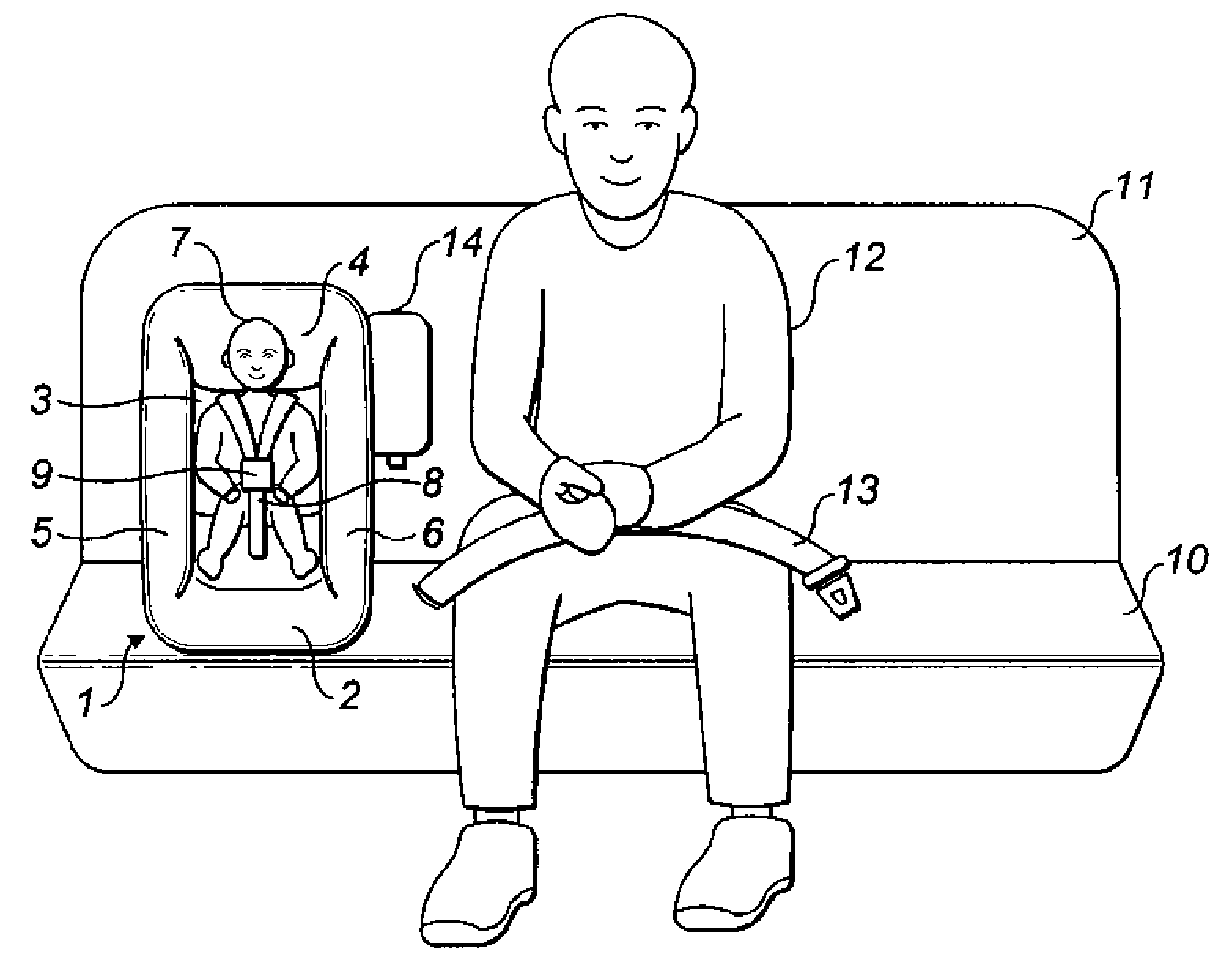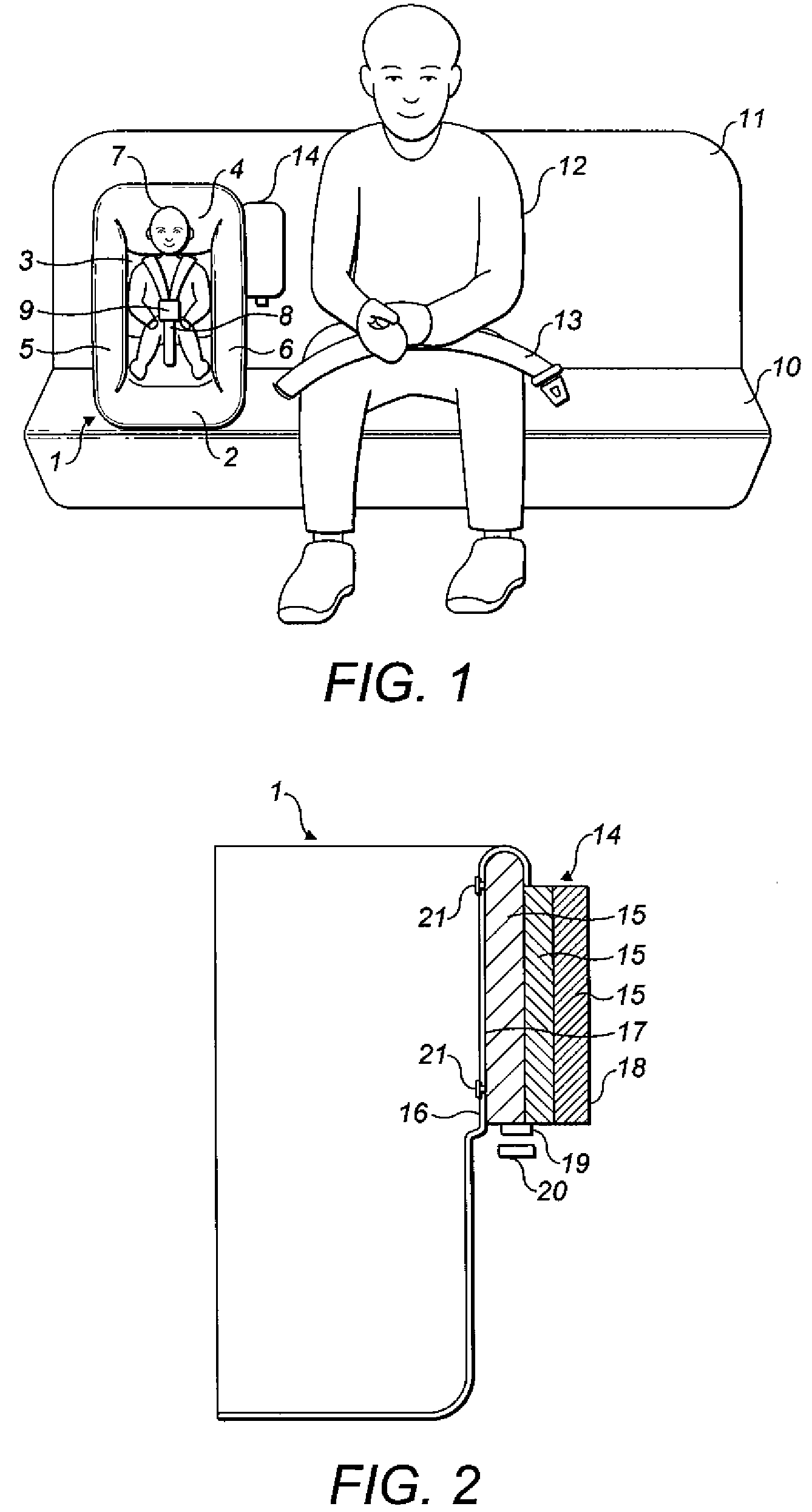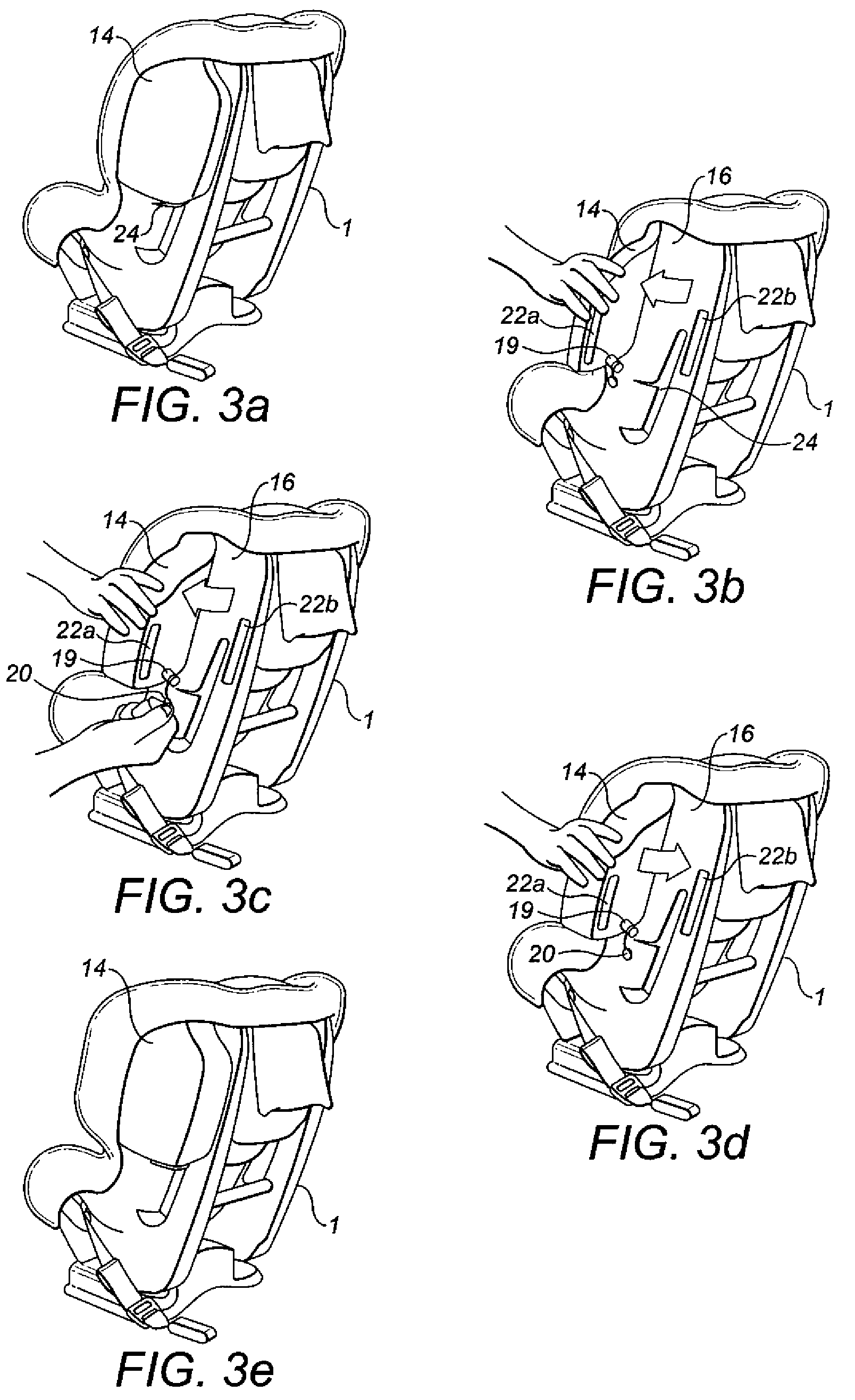Child restraint apparatus for vehicle
a child seat and vehicle technology, applied in vehicle components, pedestrian/occupant safety arrangements, vehicle arrangements, etc., can solve the problems of sudden deceleration of the child seat, injury to the occupant of the car seat, and injury to the side of the body of the passenger sitting adjacent to the child sea
- Summary
- Abstract
- Description
- Claims
- Application Information
AI Technical Summary
Benefits of technology
Problems solved by technology
Method used
Image
Examples
Embodiment Construction
[0026]FIG. 1 shows a child restraint apparatus in the form of a child car seat shown generally as 1. The child car seat 1 comprises a seat portion 2, a back portion 3, a head portion 4 and side portions 5,6 to form a substantially rigid shell or body portion which partially surrounds the occupant 7 of the child car seat. The body comprises an internal area for receiving a child and the car seat 1 is further provided with an adjustable safety harness 8 and a buckle 9 which serves to restrain the child 7 in the seat 1.
[0027]In the embodiment shown in FIG. 1, the child car seat 1 is located on the right side of a rear seat bench 10 of a vehicle with respect to the direction of travel. In the embodiment shown, the occupant of the child car seat is facing forwardly, i.e. away from the rear vehicle seat back 11. The child car seat is attached by means of an Isofix type connection (not shown). When in position, the child seat 1 takes up the area of one rear vehicle cushion, thereby leaving...
PUM
 Login to View More
Login to View More Abstract
Description
Claims
Application Information
 Login to View More
Login to View More - R&D
- Intellectual Property
- Life Sciences
- Materials
- Tech Scout
- Unparalleled Data Quality
- Higher Quality Content
- 60% Fewer Hallucinations
Browse by: Latest US Patents, China's latest patents, Technical Efficacy Thesaurus, Application Domain, Technology Topic, Popular Technical Reports.
© 2025 PatSnap. All rights reserved.Legal|Privacy policy|Modern Slavery Act Transparency Statement|Sitemap|About US| Contact US: help@patsnap.com



